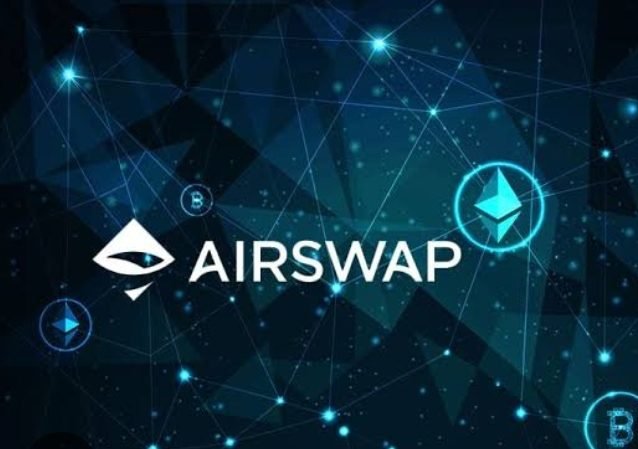Table of Contents
Blockchain technology has ushered in a new era of peer-to-peer (P2P) trading, revolutionizing the way we exchange assets. In this article, we will explore the evolution of P2P trading, from its inception with Bitcoin to modern decentralized exchanges like AirSwap. We’ll delve deep into the subject, examining the advantages of P2P trading, the rise of decentralized exchanges, and the unique features of AirSwap. Trading and investing can be tedious for newbies. To make the process easy, click https://bitcoin-buyer.app/and start with investment education.

bitcoin-to-airswap
Traditional Centralized Exchanges vs. Decentralized Exchanges
Centralized exchanges, like Coinbase and Binance, have long dominated the cryptocurrency market. These platforms act as intermediaries, facilitating trades between users. While they offer convenience, they suffer from drawbacks, including security vulnerabilities, high fees, and centralization.
In contrast, decentralized exchanges (DEXs) eliminate intermediaries, allowing users to trade directly from their wallets. DEXs leverage blockchain technology and smart contracts to enable trustless transactions, enhancing security and reducing fees.
Bitcoin and the Birth of P2P Trading
Bitcoin, the inaugural cryptocurrency, emerged from the mind of the enigmatic Satoshi Nakamoto. Nakamoto’s visionary concept envisioned Bitcoin as more than just digital currency; it aimed to create a P2P electronic cash system, liberating users from the constraints of traditional banking intermediaries. This groundbreaking technology pioneered the very essence of peer-to-peer (P2P) trading. The advent of early P2P Bitcoin trading platforms, exemplified by platforms like LocalBitcoins, played a pivotal role in facilitating direct transactions among users, thereby catalyzing the nascent decentralized exchange revolution.
The Evolution of Decentralized Exchanges
Decentralized exchanges have evolved significantly, thanks to the advent of smart contracts and blockchain platforms like Ethereum. These platforms enable the creation of decentralized applications (DApps) that power DEXs.
Notable DEXs such as Uniswap and SushiSwap have gained popularity due to their decentralized nature, liquidity pools, and automated market-making mechanisms. However, challenges like liquidity issues and front-running vulnerabilities have arisen.
AirSwap: A Deep Dive
AirSwap is a prominent player in the world of decentralized exchanges. Its unique approach to P2P trading distinguishes it from other DEXs. AirSwap introduced the SWAP token and decentralized governance, allowing users to have a say in platform decisions.
AirSwap’s core innovation lies in its design as an order book-free exchange. Instead of traditional order books, AirSwap uses an off-chain Indexer to facilitate P2P trading, enhancing privacy and reducing congestion on the blockchain.
Use Cases and Applications of P2P Trading
P2P trading transcends the realm of cryptocurrencies, with the meteoric rise of Non-Fungible Tokens (NFTs) and the proliferation of P2P trading platforms specifically tailored for NFT transactions. This burgeoning market provides enthusiasts with a direct avenue to exchange digital assets, whether they are unique digital collectibles or tokenized representations of real-world assets like real estate and art. These developments hold the potential to democratize asset ownership and inject newfound liquidity into traditionally illiquid markets. Nonetheless, a persistent challenge looms on the horizon: regulatory oversight and compliance. Governments worldwide grapple with the task of crafting appropriate regulations to oversee P2P trading while simultaneously safeguarding consumer interests in this rapidly evolving landscape.
The Future of P2P Trading on the Blockchain
The future of blockchain-based peer-to-peer (P2P) trading is brimming with potential, yet hurdles remain. Scalability and interoperability concerns must be resolved to accommodate a burgeoning user community. Anticipated advancements in P2P trading are poised to extend its reach, with deeper integration into the expansive decentralized finance (DeFi) landscape. Beyond the crypto sphere, the transformative influence of blockchain on conventional finance is undeniable. P2P trading has the capacity to challenge established financial institutions and reshape our perceptions of asset ownership and value transfer, ushering in a new era of financial innovation and inclusivity.
Conclusion
In summary, the evolution of peer-to-peer (P2P) trading on the blockchain, from its humble beginnings with Bitcoin to the innovations exemplified by decentralized exchanges like AirSwap, signifies a remarkable journey toward trustless, secure, and efficient asset trading. As blockchain technology continues to mature, the scope of P2P trading transcends traditional cryptocurrencies, encompassing non-fungible tokens (NFTs) and tokenized real-world assets. The blockchain’s disruptive potential in the financial landscape is undeniably transformative, and the transition from Bitcoin to platforms like AirSwap heralds the dawn of a promising era in peer-to-peer trading, poised to reshape the future of finance.

